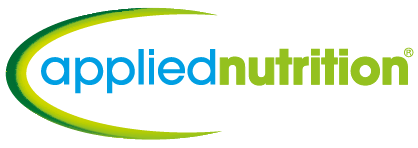
2-Week Diet & Exercise Program
TAKE THE 2-WEEK CHALLENGE!
Congratulations! You are about to embark on a 2-week diet and exercise program that will kick-start a healthy lifestyle. This doctor-developed system is specially designed to help you lose weight, so you look and feel great. With a little hard work, determination and dedication, we are confident that the results will be worth the effort. Are you up to the challenge?
THE DIET PLAN
WHAT SHOULD I EAT?
Nutrient-dense, low calorie foods are the secret to losing weight and keeping it off. Your goal for the next 2 weeks is to choose foods that have the highest nutritional value. This means choosing foods that are rich in nutrients and low in calories. Try to aim for a balanced diet that includes whole grains, healthy fats and lean proteins at every meal.
Whole foods are the best form of nutrition. The term "whole foods” refers literally to food in its whole form, with minimal processing to keep it as close to its original form as possible. For example, visualize a whole apple and compare this to a glass of apple juice. The juice on its own does not contain the skin, seeds or fleshy center. However, the whole apple offers all the goodness of the entire fruit and consequently offers greater health properties. This example applies to most all foods, so choosing "whole foods” over processed foods means you get the richest supply of nutrients possible.
Color is important! Antioxidants called "polyphenols” are responsible for the brightly colored pigments (vibrant reds, greens, blues and purples) of many fruits and vegetables. By keeping your food choices colorful, not only do you get a gorgeous looking meal, but you’ll also benefit from the positive health impact these colorful foods provide.
WHEN SHOULD I EAT?
Always eat breakfast! Breakfast is the most important meal of the day. After fasting for 8 hours through the night, the body relies on sustenance in the morning for physical and mental energy and focus. Ideally you should eat breakfast within an hour of waking to stimulate metabolism. If you are not accustomed to eating food this early in the day, try (at least for the next 2-weeks) to eat a very light but nutritious breakfast to help you get going in the morning.
Lunch should be the biggest meal of the day. This is when your digestive enzymes are maximized and your body is primed to break down and absorb food nutrients. Having your largest meal in the middle of the day provides your body with the calories that it needs to stay active.
Dinner should always be light and early. Try to finish your evening meal before 7pm or at least two hours before going to bed. It is important to give your digestive system a rest during the night-time and to allow your body to repair, regenerate and detoxify. In order for your metabolism to function at its most efficient, it relies on this nightly restorative process to keep your body operating at optimum levels.
Snacking is allowed during the 2-week bootcamp. Eating a small snack in between lunch and dinner can help to maintain balanced blood sugar levels and to restrict overeating.
THE MEAL PLAN:
The following meal plan provides 1250 calories per day. This diet is scientifically designed for healthy weight loss over the course of 2-weeks. Below is an overview of the basic dietary guidelines, outlining the daily amount of food that is allowed from each food group. You can mix and match food items throughout the day (being careful not to exceed your caloric goal) or you can simply follow one of three pre-designed menus below.
Dietary Guidelines
Fruit: 1 cup (1 cup is equivalent to: 1 cup of fresh/frozen/canned fruits, 1 cup fruit juices, ½ cup dried fruits)(Healthy options include: apples, pears, mangoes, grapes, cherries, raspberries, blueberries, strawberries, pomegranates)
Vegetables: 1.5 cups (½ cup is equivalent to: ½ cup of raw/cooked/frozen/canned veggies, ½ cup vegetable juice, 1 cup of leafy greens)(Vary your choices to include: dark green veggies, orange veggies, starchy veggies, dry beans and peas)
Grains: 4 ounces (1 ounce is equivalent to: 1 cup of cereal flakes, 1 slice bread, 1 small muffin, ½ cup cooked rice, 1 ounce dry pasta)(Choose whole grains whenever possible)
Meats and Beans: 3 ounces (1 ounce is equivalent to: 1 ounce lean meat/poultry/fish, 1 egg, ¼ cup cooked beans, 1 tablespoon peanut butter, ½ ounce nuts/seeds (almonds, walnuts, sunflower seeds, pumpkin seeds))
Milk: 2 cups (1 cup is equivalent to: 1 cup milk/yogurt/soy milk, 1½ ounces of cheese)(Choose low-fat or non-fat options whenever possible)
Oils: 4 teaspoons (1 teaspoon is equivalent to: 1 teaspoon butter, 1 teaspoon vegetable oil (olive oil is preferred), 1 teaspoon low- fat mayo, 2 teaspoons light salad dressing)
Menu #1
Breakfast (8am – 9am)
½ cup oatmeal
1 cup yogurt
black coffee or herbal tea
Lunch (11am – 1pm)
1 slice whole wheat bread (cut in half)
2 ounces tuna (in water only)
Tomato, cucumber, lettuce (equivalent to ¾ cup total)
1 teaspoon mayo + 1 teaspoon olive oil
Snack (3pm – 4pm)
1 cup of fresh fruit or 1 piece of fruit (apple, pear, plum, peach, etc)
Dinner (5pm – 7pm)
1 corn tortilla
½ cup black beans
½ cup salsa
1 ½ ounces cheese
½ cup shredded lettuce
½ cup cooked rice
Menu #2
Breakfast (8am – 9am)
Smoothie (blend together 1 cup berries + 1 cup soymilk and ice cubes)
1 slice of toast
1 teaspoon of butter
Lunch (11am – 1pm)
1 cup cooked grain (such as white rice, brown rice, wild rice, quinoa, millet, etc)
¾ cup vegetables (such as steamed broccoli, cauliflower, carrots, etc)
2 ounces of lean meat (roughly the size of ½ deck of playing cards)
Snack (3pm – 4pm)
1 egg or ½ ounce of nuts/seeds
Dinner (5pm – 7pm)
1½ cups of leafy greens (salad mix or steamed kale)
2 teaspoons light dressing
1½ ounces of cheese
Menu #3
Breakfast (8am – 9am)
1 cup high fiber cereal
½ cup milk/soy milk
1 banana
Lunch (11am – 1pm)
1 cup pasta
½ cup vegetables or ½ cup pasta sauce
2 teaspoons of olive oil
2 ounces of lean meat
Snack (3pm – 4pm)
1 cup raw carrot sticks/celery/green peppers
Dinner (5pm – 7pm)
6 crackers
1 cup low-fat cottage-cheese
½ ounce mixed nuts
TEN HELPFUL HINTS FOR DIETING SUCCESS:
- Plan out your weekly meals in advance.
- Drink 8 or more glasses of water per day. And drink at least one glass of water before every meal to help decrease appetite.
- Avoid temptations! Clear out your fridge and pantry of all food items that can derail your diet plan.
- Eat slowly; chew each bite thoroughly and put your fork down between bites. It takes approximately 20 minutes for your brain to recognize that you're full.
- Cook for yourself at home and resist the urge of eating out.
- Try new foods whenever possible; it allows opportunity to bring variety to an otherwise restricted diet.
- Add spices or chiles to your food for a flavor boost that can help you feel satisfied.
- Brush your teeth after each meal so you won’t be tempted to snack.
- Sleep 8 hours per night. Research shows that lack of sleep can stimulate appetite and lead to overeating.
- Keep your eye on the ultimate goal!
THE BOOTCAMP EXERCISE PLAN
GET MOVING!
Exercise is an important part of any weight loss program. Exercise not only helps to burn calories, but can also help to boost energy, improve mood and enhance quality of life. For the next 2-weeks, make a commitment to invest time for daily physical activity. We recommend moderate (not too strenuous) exercise such as walking and/or running. Because you will be on a low calorie diet, it is important not to overdo it! And if you are new to exercising, start slowly! Try taking a brisk walk for 15-25 minutes per day, and gradually build up to 30-40 minutes (or more) per day! In the long-term, exploring a variety of physical activities can help you stay active. Here are some options to keep you moving: biking, swimming, hiking (hills or stair climbing), dancing, weight lifting, gardening, team sports, etc.
| Week One: | |||||
| Activity Level | Warm Up | Exercise | Cool Down | Total Time (minutes) | Times Per Week |
| Minimum | Slow-Walk 5 min. |
Brisk-Walk 15 min. | Slow-Walk or Stretch 5 min. |
25 | Daily |
| Maximum | Slow-Walk 5 min. |
Brisk-Walk/Jog 30 min. | Slow-Walk or Stretch 5 min. |
40 | Daily |
| Week Two: | |||||
| Activity Level | Warm Up | Exercise | Cool Down | Total Time (minutes) | Times Per Week |
| Minimum | Slow-Walk 5 min. |
Brisk-Walk 15 min. | Slow-Walk or Stretch 5 min. |
30 | Daily |
| Maximum | Slow-Walk 10 min. |
Brisk-Walk/Jog 45 min. or Jog 20 min/ Run 5 min./ Jog 20 min. |
Slow-Walk or Stretch 5 min. |
60 | Daily |
Resources:
http://www.nhlbi.nih.gov/health/public/heart/obesity/aim_hwt.pdf
http://www.choosemyplate.gov/
This diet and exercise program is not intended to be medical advice. Always consult with your physician or other qualified health care provider before beginning any diet or exercise program and ask whether you are healthy enough to engage in this diet and exercise program. Never disregard, avoid or delay in obtaining medical advice from you doctor or other qualified health care provider concerning your health. If you have or suspect that you have a medical problem or condition, please contact a qualified health care professional immediately.

